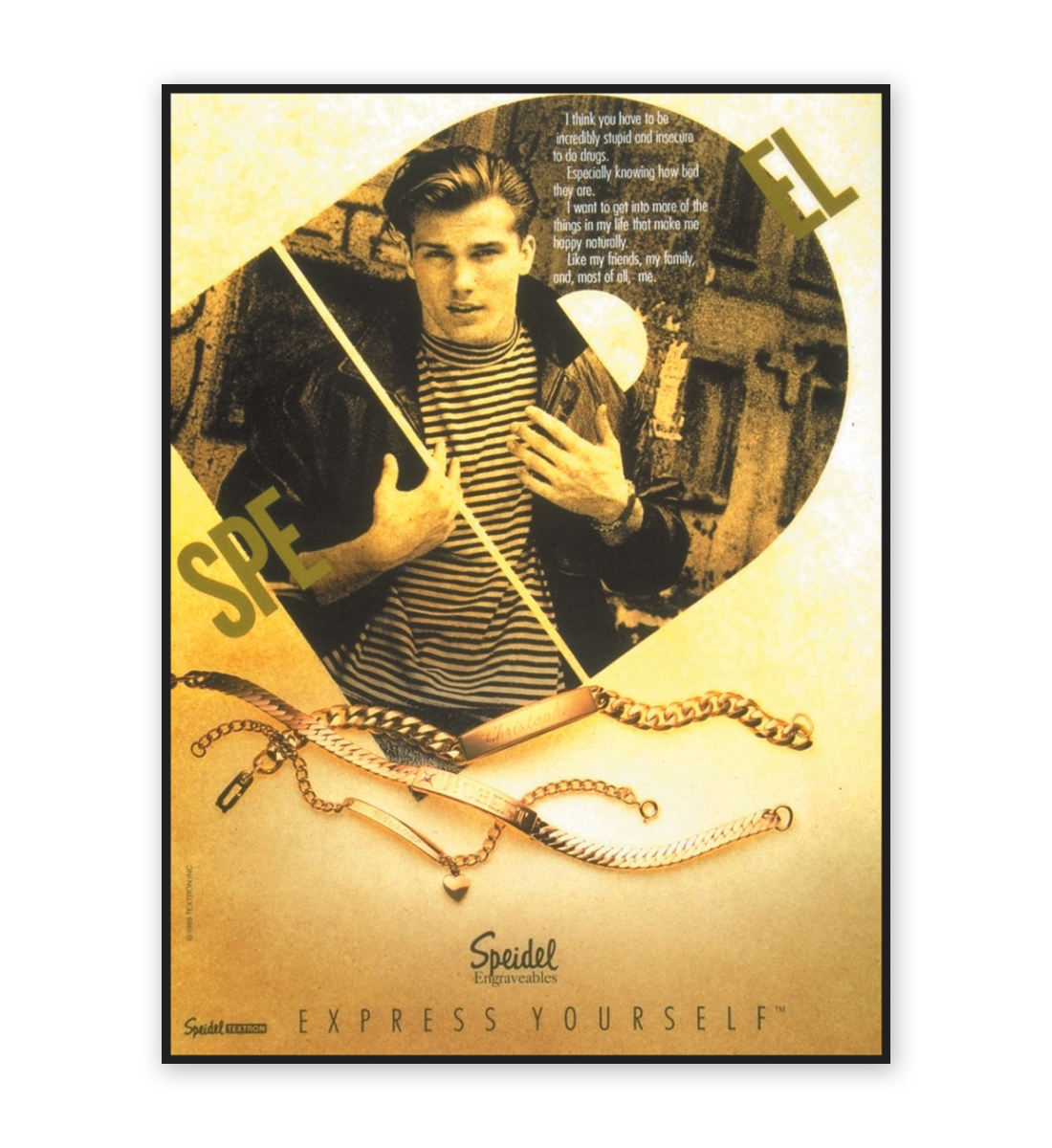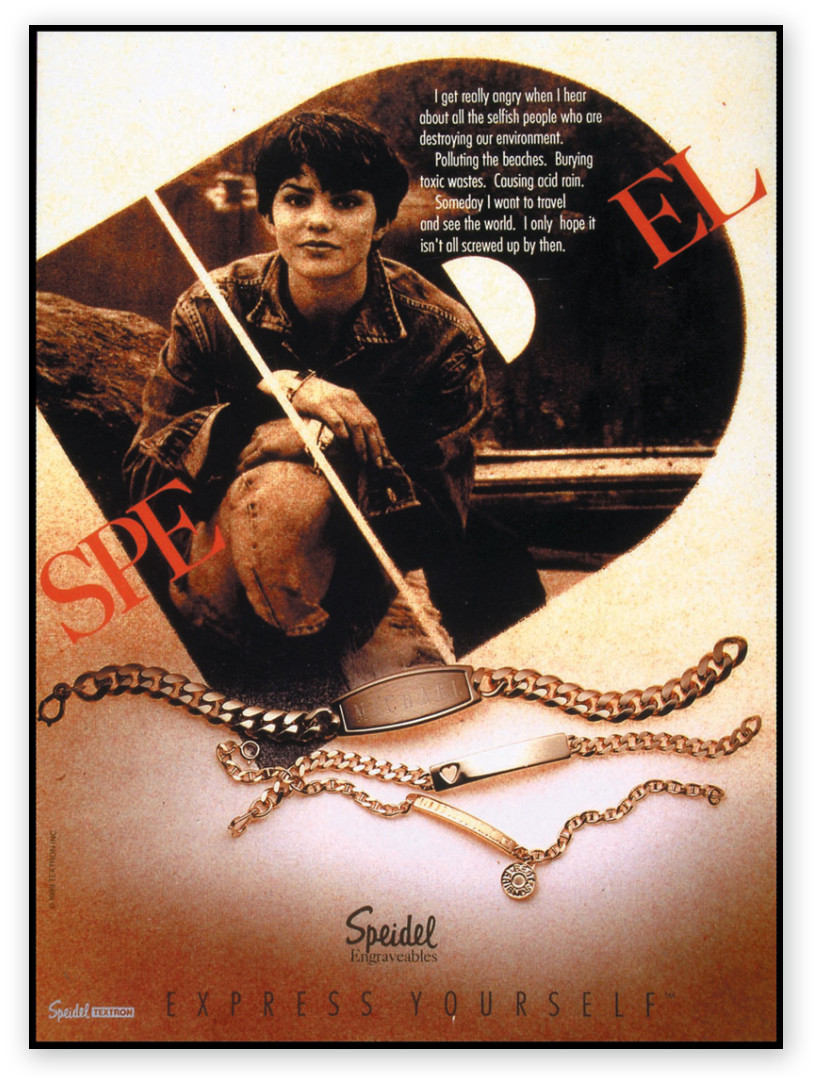It was in the late ’50s that Speidel bracelets reached their height of popularity among teenagers. As the late ’60s arrived, this American fashion icon dropped in market share. It was in 1988 that Textron,owner of the Speidel brand, had to decide whether to rebrand the bracelets or drop them from production. It was the challenge of the creative group head to fix the problem. Jeff Goss helped reestablish the image of Speidel by initiating research that resulted in moving away from the established creative approach (it’s a nice, statement piece of jewelry). In other words, “It’s your mom’s tennis bracelet but affordable.” Studies showed that teens didn’t want to appear to have expensive jewelry. They had real concerns — the environment,and drinking and driving.
Jeff created a print campaign using very fashionable teen models from top NY agencies, Ford and Elite. Our research directed us to put a 17- to 20-year-old in the message to identify with 12- to 13-year-olds. Carol Weinburger, renowned Paris fashion photographer, was hired to shoot these models in environments representative of these teens’ topical stories. This was the first ad campaign to identify with such teen concerns. After one year of running in Teen, Seventeen, YM, and Sassy, the results were staggering. Pushing production and distribution capabilities, the campaign won a Gold EFFIE award for excellence in sales, which increased 37 percent in one year.


